Event Graph
Event graph is a syncing mechanism between nodes working asynchronously.

The graph here is a DAG (Directed Acyclic Graph) in which the nodes (vertices) are user created and pushed events and the edges are the parent-child relation between the two endpoints.
The main purpose of the graph is synchronization. This allows nodes in the network maintain a fully synced store of objects. How those objects are interpreted is up to the application.
Each node is read-only and this is an append-only data structure. However the application may wish to prune old data from the store to conserve memory.
Synchronization
When a new node joins the network it starts with a genesis event, and will:
- ask for all connected peers for their unreferenced events (tips).
- Compare received tips with local ones, identify which we are missing.
- Request missing tips from peers.
- Recursively request events backwards.
We always save the tree database so once we restart before next rotation we reload the tree and continue from where we left off (previous steps 1 through 4).
We stay in sync while connected by properly handling a new received event, we insert it into our dag and mark it as seen, this new event will be a new unreferenced event to be referenced by a newer event if we for some reason didn't receive the event, we will be requesting it when reciveing newer events as we don't accept events unless we have their parents existing in our dag.
Synchronization task should start as soon as we connect to the p2p network.
Sorting events
We perform a topological order of the dag, where we convert the dag into a sequence starting from the erlier event (genesis) to the later.
Since events could have multiple parents, there is no uniqe ordering of
this dag, meaning events in the same layer could switch places in the
resulted sequence, to overcome this we introduce timestamps as metadata
of the events, we do Depth First Search (DFS) of the graph for every
unreferenced tip to ensure visiting every event and sort them based on
thier timestamp.
In case of a tie in timestamps we use event id to break the tie.
Creating an Event

Typically events are propagated through the network by rebroadcasting the received event to other connected peers.
In this example A creates a new event and boradcast it to its connected peers (B nodes), and those in turn rebroadcast it to their connected peers (C nodes), and so on, until every single node has received the event.
Node Acreates a new event.Node Asendseventto- For each in :
- validate the event (is it older than genesis, time drifted, malicous or not, etc..).
- Check if we already have the event. also check if we have all of its parents.
- request missing parents if any and add them to the DAG.
- if all the checks pass we add the actual received event to the DAG.
- Relay the event to other peers.
Genesis Event
All nodes start with a single hardcoded genesis event in their graph. The application layer should ignore this event. This serves as the origin event for synchronization.